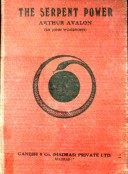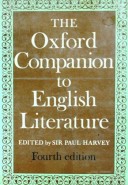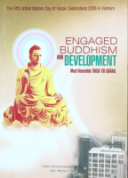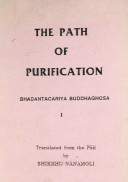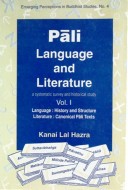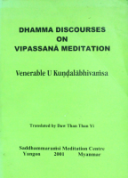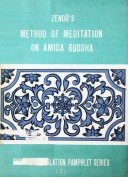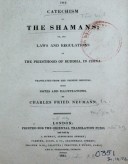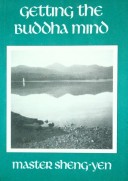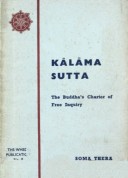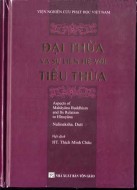Tìm Sách
Sách tiếng Anh-English >> The Serpent Power
Thông tin tra cứu
- Tên sách : The Serpent Power
- Tác giả : Arthur Avalon
- Dịch giả :
- Ngôn ngữ : Anh
- Số trang : 497
- Nhà xuất bản : Ganesh & Co. Privated Madras 17 INDIA
- Năm xuất bản : 1964
- Phân loại : Sách tiếng Anh-English
- MCB : 1210000004940
- OPAC :
- Tóm tắt :
PUBLISHERS’ NOTE TO SIXTH EDITION
The growing interest evinced by the public to understand rightly the literature of Tantra Sastra and more especially the Yoga of Kundalini Sakti has encouraged us to bring out this new edition of the almost unique original work on the subject.
The opportunity has been availed of to add a transliteration of all the Sanskrit verses and provide indexes in English for half-verses, authors, citations, words, etc.
June 1958
PUBLISHERS’ NOTE TO FIFTH EDITION
Within the last three years most of the Works of Sir John Woodroffe have been published by us after they had been out of print for nearly twenty years. It is gratifying to note that the public have appreciated the valuable nature of these books and their new, uniform get-up. The last Edition of Serpent Power was exactly the same as its predecessor but in the present one, to make reference to the Sanskrit portion easier and more convenient to critical students, indexes have been included for the verses, authors, citations, bibliography and important words at the end of the book. It is hoped that these additions would prove useful to at least some of the readers.
November 1953
PREFACE TO THIRD EDITION
This edition to which some additions have been made and in which some errors have been corrected has been revised throughout. Since the issue of the second edition several new volumes have appeared in the series of “Tãntrik Texts”. In connection with this book the reader is specially referred to the Kamakalavilăsa, one of such Texts, as also to the essay on “Creation in the Tantras” which with other new material is printed in Sakti and Sakta. The publishers have published a volume called Mahãmaya by Professor Pramatha Nãtha Mukhyopãdhyãya and myself in which comparison is made of the concept of Mãyã as held by the Sãktas and Mãyãvãdỉns respectively. I repeat that it is not possible to understand this Yoga without having been first well grounded in its philosophy. I say ‘understand’ only because the question of the reality and value of this form of Yoga is not one with which this book is concerned.
Since the publication of the second edition, there has been issued a monograph on the Cakras by the well-known Theosophist, the Right Reverend C. W. Leadbeater, which includes matter published by him in 1910. The volume contains plates of the Cakras as said to have been seen clairvoyantly as also a plate of the Cakras according to Johann Georg Gichtel, a pupil of Jakob Boehme taken from his Theosophia Practica originally issued in 1696 and reprinted in 1897 (Ghacomac, Paris. See also Plates at the end of Dr. Law’s edition of the translation into English of Behmen). Dr. Rele has also published a book entitled The Mysterious Kunddim (Taraporewalla, Bombay) to which I have written an Introduction.
Oxford
September 11, 1928
PREFACE TO SECOND EDITION
Considering the recondite nature of the subject, the first edition published by Messrs. Luzac & Co., London, has had a more rapid sale than was expected, and a call for a second edition has enabled me to revise the whole work and to make several corrections and additions both in the Introduction and Text. To this second edition has been added the Sanskrit Text of the works here translated which formerly appeared as Vol. 2 of the Tãntrik Texts and which has since gone out of print. This edition also contains in addition to the original coloured plates of the Cakras, a number of half-tone plates taken from Life, showing some positions in Kunqlalinl-Yoga.
The Introduction deals in a general way with the subject-matter of the Texts translated. I take however this opportunity to say again that it has not been possible to give here a full explanation of such matters, and refer my reader to my other works dealing with the Tantras and their Ritual, namely, Principles of Tantra, a work of peculiar value in that it is a translation of the work of a Bengali Pandit, himself a Sãkta unacquainted with the English language but an inheritor of the old traditions; as also my Sakti and Sãkta dealing with ritual, published since the date of my first Preface. The Studies in Mantra-Sãstra referred to therein has also recently been published under the title of Garland of Letters. All such technical terms as Bindu, Nãda and the like used in the works translated have been fully explained therein as also the general principles of Mantra. It is necessary also to know with accuracy the exact meaning of the terms Consciousness, Mind, Life, Matter and so forth as used in Vedanta and these have been given in the series of little works under the general caption The World as Power. It is not possible to understand the rationale of Yoga without an accurate understanding of these fundamental terms. It has been rightly said that II the practical portion of all Yoga, specially of Raja Yoga, is concerned with mental practices. It is therefore absolutely necessary that the student of Yoga should know what his mind is and how it works” (Raja Toga, by Swami Dayănand, p. 9). I have given a short account of Sarvănanda and his fife in the Hindusthan Review. Other works by me on the Sãstra are noted in the advertisement sheet at the end of the book.
Les Andelys Eure A. Avalon
October, 1922
PREFACE
“We pray to the Paradevatã united with Siva, whose substance is the pure nectar of bliss, red like unto vermilion, the young flower of the hibiscus, and the sunset sky; who, having cleft Her way through the mass of sound issuing from the clashing and the dashing of the two winds in the midst af Susumna rises to that brilliant Energy which glitters with the lustre of ten million lightnings. May She, Kundalini, who quickly goes to and returns from Siva, grant us the fruit of Toga! She being awakened is the Cow of Plenty to Kaulas and the Kalpa Creeper of au things desired for those who worship Her.”
—Saradã-Tilaka, xxxv, 70
In my work Sakti and Sãkta I outlined for the first time the principles of “Kundali-Yoga” so much discussed in some quarters, but of which so little was known.
This work is a description and explanation in fuller detail of the Serpent Power Kundali-Sakti), and the Yoga effected through it, a subject occupying a pre-eminent place in the Tantra-Sãstra. It consists of a translation of two Sanskrit works published some years ago in the second volume of my series of Tãntrik Texts, but hitherto untranslated. The first, entitled “Satcakra-nirũpana” (“Description of and Investigation into the Six Bodily Centres ”), has as its author the celebrated Tantrik Purnananda-Svãmi, a short note on whose life is given later. It forms the sixth chapter of his extensive and unpublished work on Tãntrik Ritual entitled “Sri-tattva- cintãmanĩ”. This has been the subject of commentaries by among others Samkara and Visvanãtha cited in Volume II of the Tãntrik Texts, and used in the making of the present translation. The commentary here translated from the Sanskrit is by Kãlĩcarana.
The second text, called “Pãdukã-Pancaka” (“Five-fold Footstool of the Guru”) deals with one of the Lotuses described in the larger work. To it is appended a translation from the Sanskrit of a commentary by Kãlĩcarana. To the translation of both works I have added some further explanatory notes of my own. As the works translated are of a highly recondite character, and by themselves unintelligible to the English reader, I have prefaced the translation by a general Introduction in which I have endeavoured to give (within the limits both of a work of this kind and my knowledge) a description and explanation of this form of Yoga. I have also included some plates of the Centres, which have been drawn and painted according to the description of them as given in the first of these Sanskrit Texts.
It has not been possible in the Introduction to do more than give a general and summary statement of the principles upon which Yoga, and this particular form of it, rests. Those who wish to pursue the subject in greater detail are referred to my other published books on the Tantra Sãstra. In Principles of Tantra will be found general Introductions to the Sãstra and (in connection with the present subject) valuable chapters on Sakti and Mantras. In my recent work, Sakti and Sakta (the second edition of which is as I write reprinting), I have shortly summarised the teaching of the Sãkta Tantras and their rituals. In my Studies in the Mantra-Sãstra, the first three parts of which have been reprinted from the “ Vedãnta Kesari,” in which they first appeared, will be found more detailed descriptions of such technical terms as Tattva, Causal Saktis, Kalã, Nãda, Bindu, and so forth, which are referred to in the present book. Other works published by me on the Tantra, including the Wave of Bliss, will be found in the page of advertisements.
The following account of Pũrnãnanda, the celebrated Tãntrika Sãdhaka of Bengal, and author of the “Sat-cakra- niriipana,” has been collected from the descendants of his eldest son, two of whom are connected with the work of the Varendra Research Society, Rajshahi, to whose Director, Sj. Aksaya-Kumãra-Maitra, and Secretary, Sj. Rãdha-Govinda- Baisak, I am indebted for the following details:
Pũrnãnanda was a Rahri Brãhmana of the Kasyapa Gotra, whose ancestors belonged to the village of Pakrashi, which has not as yet been identified. His seventh ancestor Anantãcãrya is said to have migrated from Baranagora, in the district of Murshidabad, to Kaitali, in the district of Mymensingh. In his family were born two celebrated Tantrika-Sãdhakas—namely, Sarvãnanda and Pũrnãnanda. The descendants of Sarvãnanda reside at Mehar, while those of Pũrnãnanda reside mostly in the district of Mymensingh. Little is known about the worldly life of Pũrnãnanda, except that he bore the name of Jagadananda, and copied a manuscript of the Visnupuranam in the Sãka year 1448 (A.D. 1526). This manuscript, now in the possession of one of his descendants named Pandit Harì-Kỉshore-Bhattãcãrya, of Kaitali, is still in a fair state of preservation. It was brought for inspection by Pandit Satis-Candra-Sỉddhãntabhũsana of the Varen- dra Research Society. The colophon states that Jagadananda Sarma wrote the Purãna in the Sãka year 1448.
This Jagadănanda assumed the name of Pũrnãnanda when he obtained his Dĩksã (Initiation) from Brahmãnanda and went to Kãmarũpa (Assam), in which province he is believed to have obtained his “Siddhi” or state of spiritual perfection in the Asrama, which still goes by the name of Vasisthasrama, situated at a distance of about seven miles from the town of Gauhati (Assam). Pũrnãnanda never returned home, but led the life of a Paramahamsa and compiled several Tantrik works, of which the Srĩ-tattva-cỉntãmani, composed in the Sãka year 1499 (A.D. 1577), Syãmarahasya, Sãkta-krama, Tattvãnanda-taraiigini, and Yoga-sara are known. His commentary on the Kãlĩkakãrakũta hymn is well known. The Sat-cakra-nirupana, here translated, is not, however an independent work, but a part of the sixth Patala of the Srĩ-tattva-cintãmani. According to a genealogical table of the family of this Tãntrika-Acarya and Virãcãra-Sãdhaka, given by one of his descendants, Pũrnãnãnda is removed from his present descendants by about ten generations.
This work has been on hand some five years, but both the difficulties of the subject and those created by the war have delayed its publication. I had hoped to include some other plates of original paintings and drawings in my possession bearing on the subject, but present conditions do not allow of this, and I have therefore thought it better to publish the book as it stands rather than risk further delay.
Arthur Avalon
Ranchi
September 20, 1918
CONTENTS
Publishers’ Note to Sixth Edition
Publishers’ Note to Fifth Edition
Preface to Third Edition
Preface to Second Edition
Preface
Introduction
- Introductory
- Bodiless Consciousness
III. Embodied Consciousness Qĩvảtmã)
- Mantra
- The Centres or Lotuses (Cakra, Padma)
- Practice (Yoga: Laya-Krama)
VII. Theoretical Bases of this Yoga
Translation and Commentary
Description of the Six Centres (Sat-Gakra-Nirũpana)
The Fivefold Footstool (Paduka-Pancaka)
Appendices
- Index of Half Verses
- Index of Authors
III. Index of Works
- Index of Words
Text (Sanskrit)
Appendices (Sanskrit)
ILLUSTRATIONS (CAKRAS)
PLATE
- The Centres or Lotuses – Frontispiece
- Mũlãdhãra-Cakra – to fact
- Svãdhísthãna
- Manipũraka
- Anãhata
- Visuddha
- Ajna
- Sahasrãra
ILLUSTRATIONS (YOGASANAS)
- Mahãbedha according to Hatha-yoga-pradlpika and Yamala
- Padmãsana with Lauliki
- Uddiyãna-Bandha in Siddhăsana—1st Stage
XII. Uddiyana-Bandha in Siddhãsana—2nd Stage
XIII. Mahãbandha
XIV. Mũlãbandha in Siddhãsana
- Yoni-Mudrã in Siddhãsana
XVI. Mahãmudrã
XVII. Baddha-Padmãsana
 Facebook
Facebook
 Google
Google
 Google+
Google+
